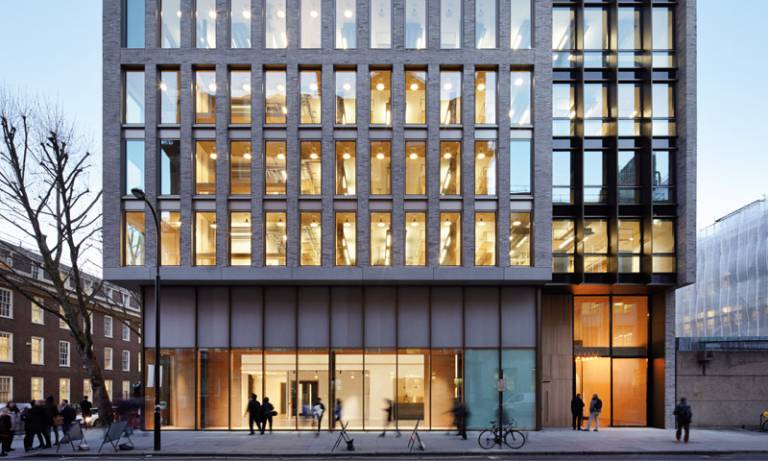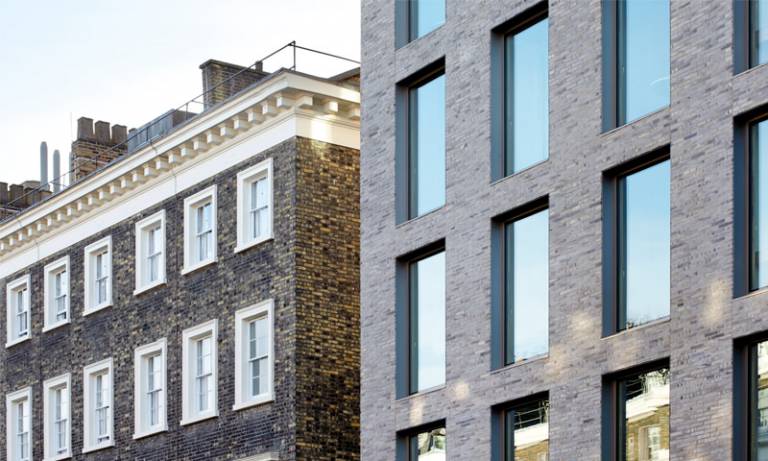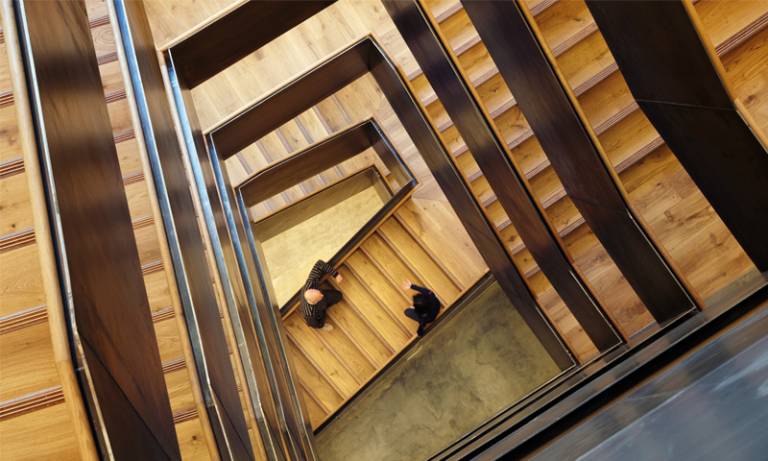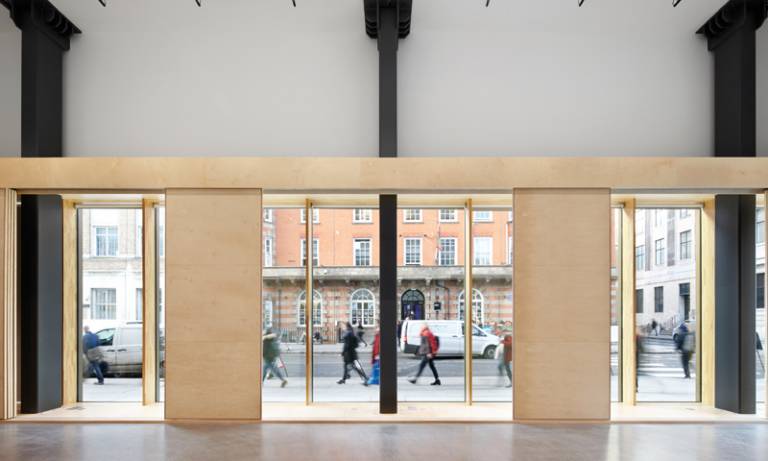We look at the philosophy behind the design of 22 Gordon Street and ask how the School of Architecture’s new home will shape the future student/teacher experience. Words: Rebecca Spaven

Bob Sheil, Director of The Bartlett School of Architecture, described Wates House as a “provocateur”. It’s hard to say for sure whether the students thrived despite the limitations of the original building, or whether the tightness and disorder was the grit in the oyster, producing generations of resilient and resourceful architects. Speculation aside, Wates House was used intensively for nearly 40 years, seeing The Bartlett go through decades of ideological, pedagogical and demographic evolution. But it was suffering from chronic space shortage and in 2012 urgent action was needed.
The brief to architects Hawkins\Brown was clear, albeit challenging: design a lean, efficient building capable of eking out as much space as possible on a small footprint, while at the same time making a positive contribution to the Bloomsbury conservation area. As work began, the School of Architecture moved temporarily to converted warehouses on Hampstead Road and the open-plan setup there proved a fertile testing ground for Hawkins\Brown’s proposals for 22 Gordon Street.

Relieved to finally have the space to spread out, the School of Architecture flourished. Reversing the inward-looking nature of Wates House was crucial to its new design. Hawkins\Brown has stripped the original building to its bones and dramatically opened up the space, filling the building with light. Where once a visitor would be greeted by a forbidding façade and an obscure entrance down a narrow alleyway, there is now warm timber and floor-to-ceiling windows. The main entrance is a true statement of intent by the School of Architecture: public-facing, transparent, open for business.

The building’s centrepiece is the steel staircase that slices through the southeast corner of 22 Gordon Street and acts as the main circulatory system for the building. Conceived as a ‘social generator’, the staircase and landings on each floor are some of the building’s many deliberately indeterminate, adaptable spaces. A 1.5m strip of reclaimed space has been added to the floorplate, producing flexible and intriguing areas around the perimeter of each floor, to be used as extra teaching space, or for crits and exhibitions.
These generous open spaces contrast with the densely populated studio areas, which are designed to ensure that every student has their own desk space, but also to replicate the culture of a school whose students have always thrived off working closely and intimately.

Clues that 22 Gordon Street is not an entirely new-build can be found on every floor, with the original structural elements of Wates House in rough, paint-marked concrete contrasting with the cleanness of new joinery. However disarmingly familiar some parts might be to those who knew Wates House, 22 Gordon Street is a complete transformation of both the external appearance and the internal function of the building. It signals a new stage in The Bartlett’s development and evolution.
A personal project
Bartlett alumnus and Hawkins\Brown architect Tom Noonan describes how his experience of studying at Wates House influenced the new building’s design.
As an alumnus of The Bartlett, I know from my experience that the people we were designing for were likely to break the rules of building occupation. So we had to design a vessel that supported constant change – a blank canvas that would evolve with future generations of designers.
The design of 22 Gordon Street aimed to nurture and enhance the positive qualities we discovered in Wates House, while at the same time addressing the building's historic flaws. The stairwells used to be one of the most sociable spaces, enabling chance encounters between people who would normally be contained within the studio cells. We learned from the unpredictable opportunities these ‘leftover’ spaces offered, and the new central staircase and landings take their cue from these.
For me, the essence of the design of 22 Gordon Street is symbolised by the moment the handrail of the existing stairs changes from steel to timber. We have retained the colours, scratches and marks to signify where the old building ends and the new one begins.
The success of the School of Architecture is partly down to the nature of the unit system, which was supported and exaggerated by Wates House’s cellularised design. The new building offers a more open arrangement of spaces to encourage collaboration between units, while also allowing them to create their own identity.
 Close
Close

